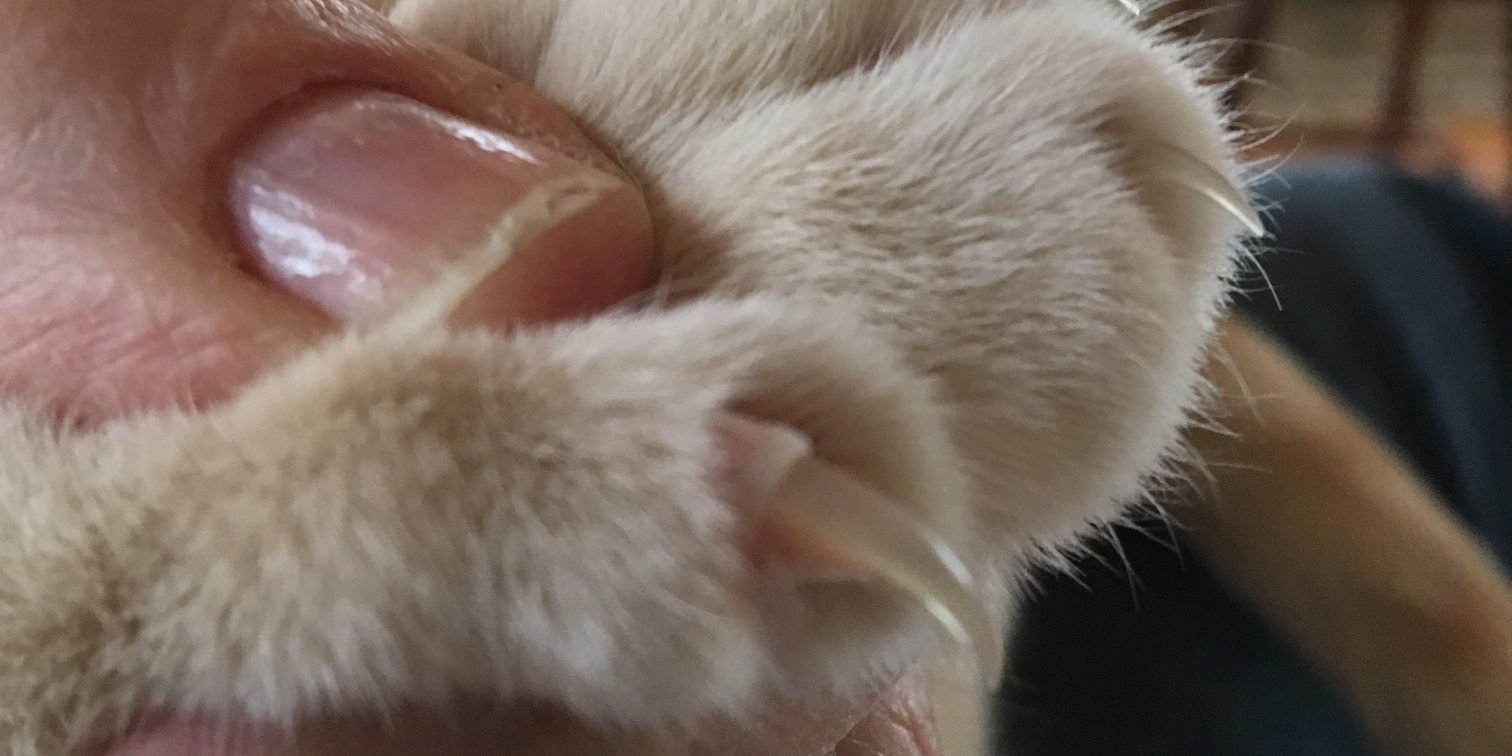Why You Should Clip Your Cat’s Claws
Clipping their claws is super easy to do, but I know the first few times you do it, it can seem scary.
Why Not Just Declaw?
For the health and well-being of your kitty, Wild Blue Cats! and most veterinarians recommend not declawing your kitty. In fact, most vets and cat lovers view declawing as an absolute last resort — and many vets refuse to declaw cats even as a last resort. The potential complications of declawing such as pain, behavior changes and increased likelihood of biting are deemed by most to outweigh the benefits (to the owners — cats accrue no significant benefits) of the procedure. You can read more about just what declawing does to your cat with our related article, The Truth About Declawing.
The older generation of veterinarians who still believe in declawing are dying off, so people must adjust to the reality of a world in which declawing does not happen. This means that most cat claws need to be trimmed. Nail trimming, unlike declawing, carries many benefits not only for people and property but also for cats.So how do you take care of those sharp needles that your cat pokes into your skin? Read on, and I hope you’ll learn how to handle this routine task.
Learning The Tools
Of course, you need your nail clippers, either the same ones that you use on your own nails or the specialized ones that you get from any pet store (they that look like little scissors with blunt ‘noses’).
It’s also smart to keep treats on hand to reward your kitty after clipping them. This is a great way to get your cat to tolerate having his/her claws trimmed regularly.
You also need to know what you’re clipping and what not to clip. Long before you try to trim, gently press on a toe pad of your kitty’s claw to extend the claw. Look closely at the claw– it’s curved, with a white part and a pink part. The pink part of a cat’s nail is called the quick. It is where the nerves and blood vessels are.
Do NOT cut the pink area.
When you trim, you’ll only snip the white part of the claw. It’s better to be cautious and cut less of the nail rather than risk cutting the quick. If you do accidentally cut the quick, any bleeding can be stopped with a styptic powder or stick– these can be purchased in the same section as the nail trimming and clipping tools. It’s a good idea to keep it nearby while you trim. You can purchase a styptic powder stick at any pet store or Walmart. The sticks are generally right next to the nail trimming tools.
When To Clip
If your kitty has a favorite place to cuddle up or nap next to you, plan to do it then. I like to keep my clippers on my end table so they are handy when my kitty comes to hang out. When your cat is relaxed is the time to gently grab a paw and clip those claws.
If your kitty struggles, take it slow. If they get really stressed out, it’s best to leave your kitty alone for awhile so they get relaxed again, or try another day altogether. Some people do a ‘kitty clippy plan’, where they trim one or two nails a night, rather than all at once.
Some kitties may require the help of a friend or family member to help out. While one person holds the kitty and gently strokes them to keep him/her relaxed, the other person can quickly cut each nail.
How to Clip
One claw at a time, gently press on each toe pad of your kitties paw to cause the claw to extend. Remember, only snip the white part of the claw. If you can only get a little bit off the end, that’s OK. Better that than the quick!
Try to set up a routine of clipping your kitties claws on a regular basis. Doing it once a week will keep your kitties claws trim and will keep you happy too. Most of the kitties adopted from Wild Blue Cats! are already used to having their nails clipped regularly, so keep up the routine.
Remember that with nail trimming, as with so many things in life, practice makes a big difference. If you set your mind to regularly handling and trimming your cat’s nails, you will most likely get good at it, and your cats will appreciate your efficiency.
Information gathered from over 20 years experience clipping cats claws, PetMD and Catster magazine articles and veterinarian advice and interviews.






